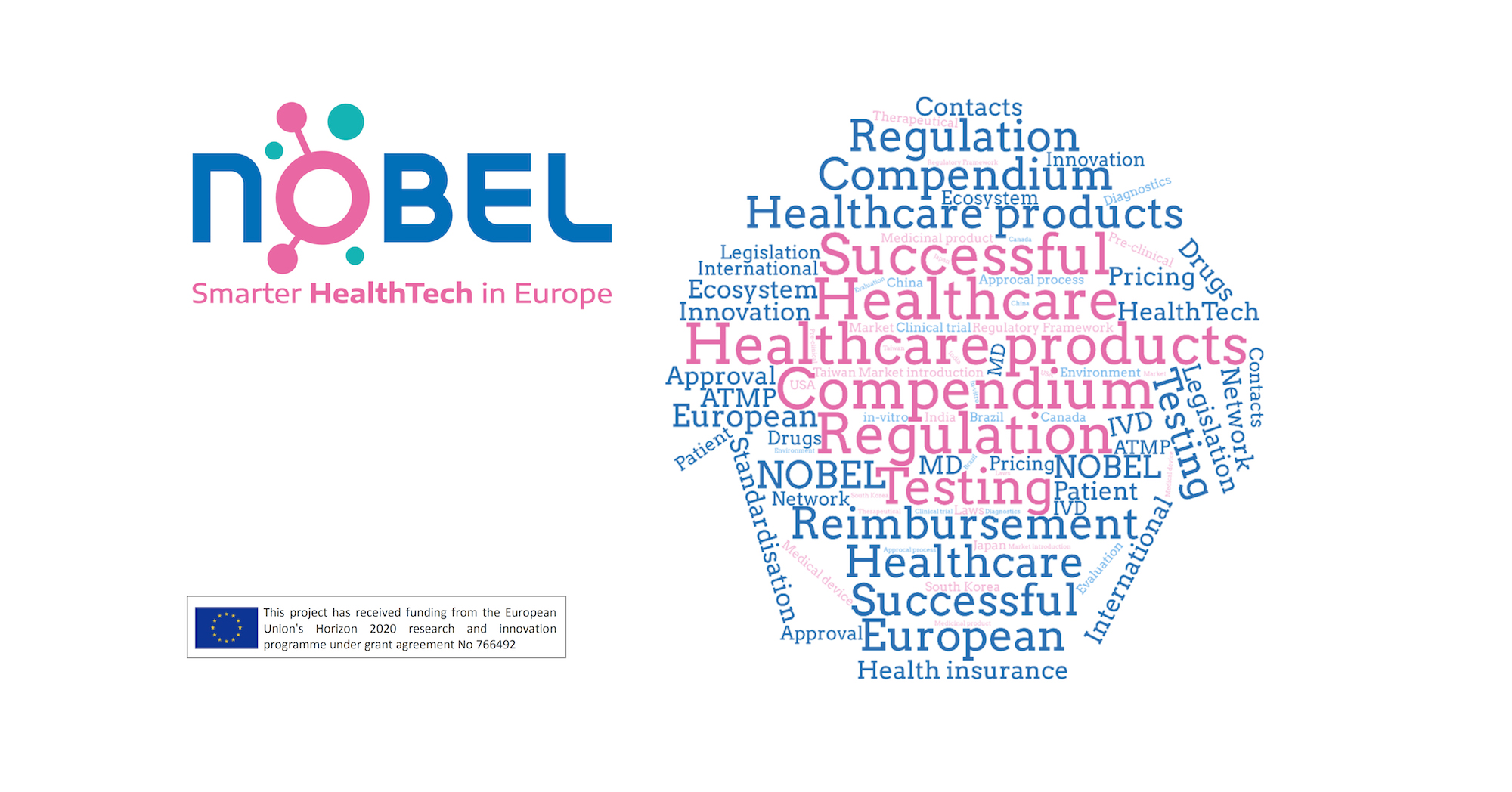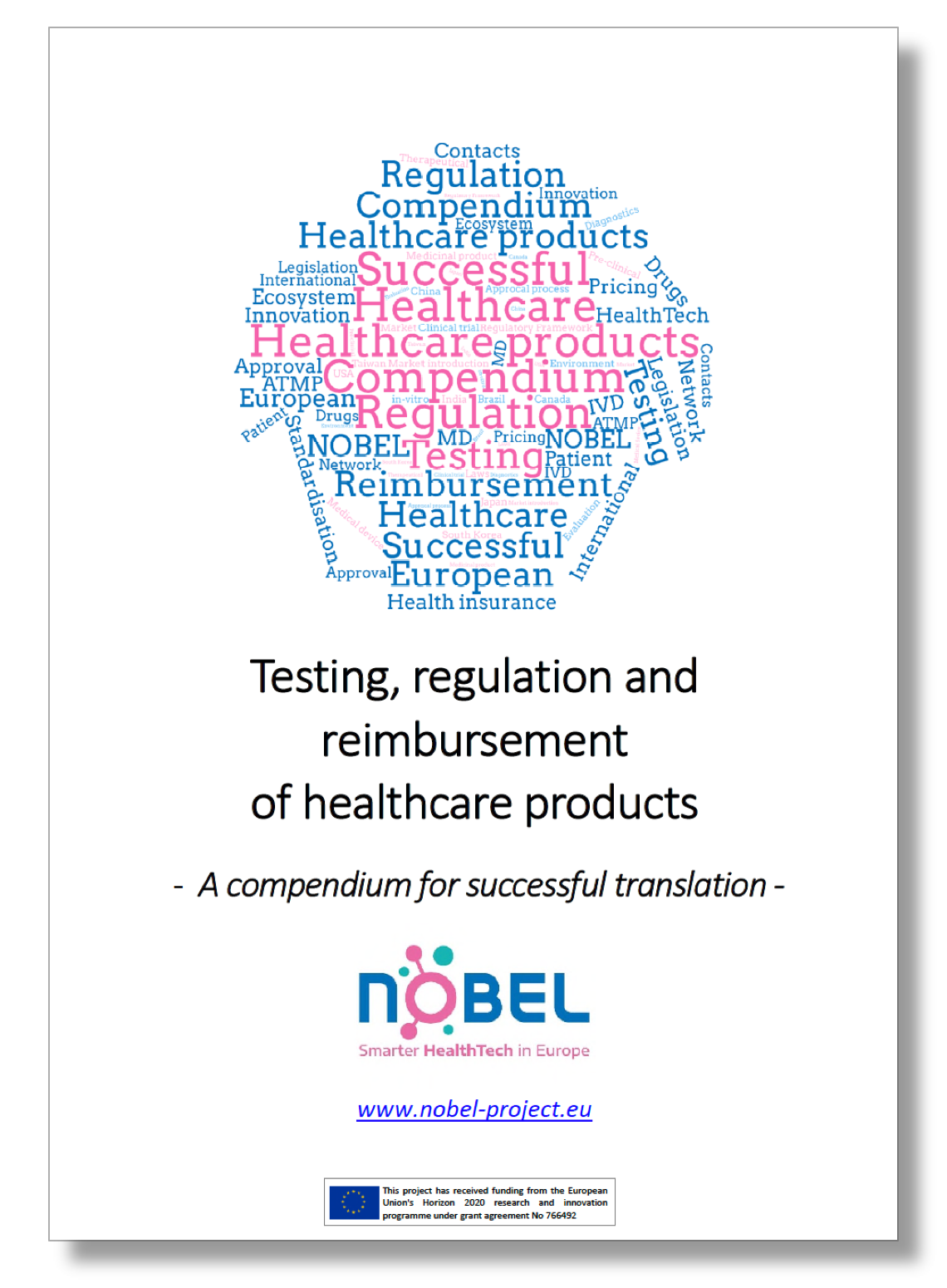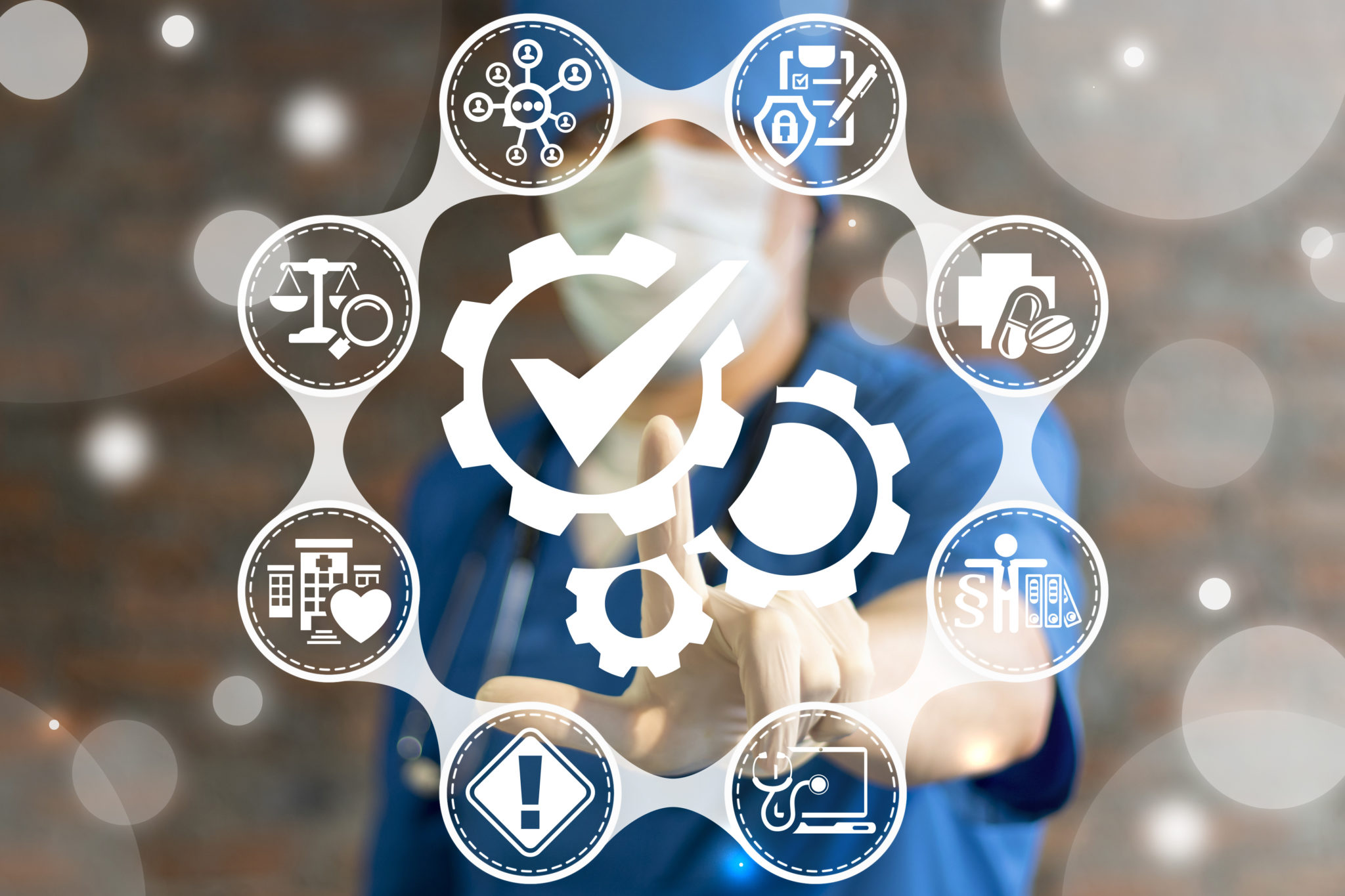
The NOBEL Project releases today a compendium describing the regulatory processes for medicinal products, medical devices and in vitro diagnostic devices. It contains helpful information about standardisation of such products. In addition, it provides links and contact data to relevant agencies in Europe and eight countries outside Europe. The market of healthcare products is global and subject to changes due to more cross-technology and digitized smart products. Accordingly, technology developers and especially start-ups need to know and understand that they have to run through complex regulatory and standardisation processes to reach the market. We hope this document will be helpful for you.
 Get your copy of the compendium
Get your copy of the compendium
Do you lead some innovative projects in healthcare? Are you developing breakthrough solutions for patients but still need guidance to accelerate your future approval and reimbursement? Are you a policy maker? Please download and share the compendium of the NOBEL Project about regulatory process for medicinal products, medical devices & In vitro diagnostics BY CLICKING HERE.
Introduction: the Ecosystem of Healthcare products
The translation of any new medical invention, including nanomedicine, into a final product is a highly regulated and complex process. The process can be roughly divided into a pre-clinical and clinical trials part – governed by regulation agencies such as the European Medicines Agency (EMA) or National Agencies – and in continuation, into a part dealing with pricing and reimbursement issues, which are mainly handled by national or regional authorities.
Methods & main results
The compendium edited by the NOBEL Project gives a broad overview of this regulatory ecosystem and issues to be considered on the way from research proof of concept to the patient. It can be used as kind of a guidance listing the requirements and processes for the three main areas: preclinical and clinical regulations plus reimbursement.
 Two main procedures can be distinguished: one for medicinal (pharmaceutical) products and one for medical devices and in vitro diagnostic products. Medicinal products require extensive pre-clinical validation followed by three clinical phases, which takes several years and requires large financial resources. In comparison, medical devices and in vitro diagnostic products are audited by Notified Bodies with regard to functionality and safety and, depending on the risk classification, also require clinical trials. Therefore, assignment of an invention to one or the other system is critical. However, this assignment can be different in Europe or other parts of the world, especially for so-called borderline products, which combine a diagnostic and therapeutic feature. Early contact to the relevant regulators described below is recommended to take this decision. In order to support exporting start-ups and SMEs, an overview of existing regulation and reimbursement rules in Europe and abroad has been conducted. The resulting compendium explains the process and the difference between the three regulatory themes for medicinal products (pharmaceuticals), medical devices and in vitro diagnostic devices. Furthermore, information about reimbursement practices and the involved organisations are provide. In addition, relevant international standardisation bodies concerned by innovative medical technologies with relevant contact points were identified and listed in order to support the standardisation of new technologies or protocols coming from a cross-KETs development. All together the compendium will help technology developers to be aware of the regulatory ecosystem to coped with on their way to market In the frame of the previous ENATRANS project a previous compendium describing the regulatory ecosystem for nanomedicines was produced and served as a template for the NOBEL compendium. In the new version all links present in the ENATRANS copy were reviewed and updated, if needed. The chapter describing the regulatory systems for medical devices (MD) and in vitro diagnostic devices was adapted to the new EU regulations (MDR and IVDR) in these two fields. The description of the non-EU countries was revised and extended by two new countries, Canada and Taiwan, adding up to a total of eight non-EU countries. Both Annexes listing reimbursement organisations for pharmaceutical and MD products in Europe were revised and updated. The complete Compendium is shown in Annex 1.
Two main procedures can be distinguished: one for medicinal (pharmaceutical) products and one for medical devices and in vitro diagnostic products. Medicinal products require extensive pre-clinical validation followed by three clinical phases, which takes several years and requires large financial resources. In comparison, medical devices and in vitro diagnostic products are audited by Notified Bodies with regard to functionality and safety and, depending on the risk classification, also require clinical trials. Therefore, assignment of an invention to one or the other system is critical. However, this assignment can be different in Europe or other parts of the world, especially for so-called borderline products, which combine a diagnostic and therapeutic feature. Early contact to the relevant regulators described below is recommended to take this decision. In order to support exporting start-ups and SMEs, an overview of existing regulation and reimbursement rules in Europe and abroad has been conducted. The resulting compendium explains the process and the difference between the three regulatory themes for medicinal products (pharmaceuticals), medical devices and in vitro diagnostic devices. Furthermore, information about reimbursement practices and the involved organisations are provide. In addition, relevant international standardisation bodies concerned by innovative medical technologies with relevant contact points were identified and listed in order to support the standardisation of new technologies or protocols coming from a cross-KETs development. All together the compendium will help technology developers to be aware of the regulatory ecosystem to coped with on their way to market In the frame of the previous ENATRANS project a previous compendium describing the regulatory ecosystem for nanomedicines was produced and served as a template for the NOBEL compendium. In the new version all links present in the ENATRANS copy were reviewed and updated, if needed. The chapter describing the regulatory systems for medical devices (MD) and in vitro diagnostic devices was adapted to the new EU regulations (MDR and IVDR) in these two fields. The description of the non-EU countries was revised and extended by two new countries, Canada and Taiwan, adding up to a total of eight non-EU countries. Both Annexes listing reimbursement organisations for pharmaceutical and MD products in Europe were revised and updated. The complete Compendium is shown in Annex 1.
Take-home messages
The overview of the regulation processes described in this compendium of the NOBEL Project shall raise awareness of each producer of a new product for the healthcare system. Compliance of the product with the relevant regulation has to be checked right at the beginning of the product development process. Thereby it is important to understand that not only safety and efficacy are important issues, but that HTA and reimbursement become more and more important when it comes to the question of return on investment. Producers should use the compendium to seek early contact to the relevant agencies and ministries to make sure that the new product reaches the clinic or patient.
***
Get support from the HealthTech TAB!
 And transform you medical invention into a successful business in Europe. The HealthTech TAB is a unique mentoring service in Europe, boosting selected HealthTech inventions to transform them into successful businesses. It is funded and managed by the NOBEL Project. The HealthTech TAB:
And transform you medical invention into a successful business in Europe. The HealthTech TAB is a unique mentoring service in Europe, boosting selected HealthTech inventions to transform them into successful businesses. It is funded and managed by the NOBEL Project. The HealthTech TAB:
- gives access to world-class expertise from former managers from Pharma and Medtech industry, successful entrepreneurs, heads of innovation agencies, etc.
- offers custom support: IP management, regulatory aspects, business development, market access, scale-up, team building, fund raising, etc.
- is open to all: start-up, SMEs, academics, individual entrepreneurs, industry, etc.
- is free-of-charge for its beneficiaries, as a service funded by the E.C. through the NOBEL Project
- has already supported +110 projects and helped its beneficiaries to raise +15Moi€ in fundraising
***
Table of contents of the compendium
Introduction – the Ecosystem of Healthcare products
- Regulation of Medicinal Products
- Pre-clinical evaluation
- Clinical trial evaluation
- Pricing and Reimbursement
- Regulation of Medical Devices (MD) and in vitro Diagnostic Medical Devices (IVD)
- Pricing and Reimbursement
- International, European and National Standardisation Environment
- Legislation
- International Regulatory Processes in
- Regulatory Processes in the USA
- Regulatory Processes in China
- Regulatory Processes in Japan
- Regulatory Processes in India
- Regulatory Processes in Brazil
- Regulatory Processes in South Korea
- Regulatory Processes in Canada
- Regulatory Processes in Taiwan
- Concluding remarks
Download by clicking here “Testing, regulation and reimbursement of healthcare products : a compendium for successful translation by the NOBEL Project”.
